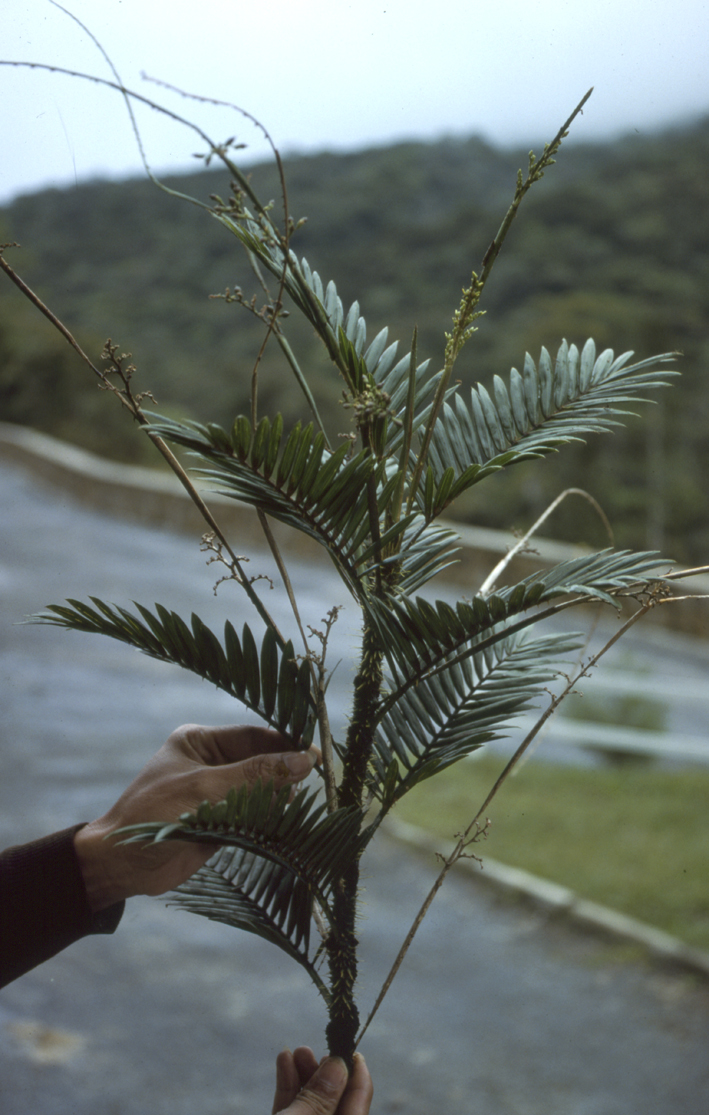- Acanthophoenix
- Acrocomia
- Actinokentia
- Actinorhytis
- Adonidia
- Aiphanes
- Allagoptera
- Ammandra
- Aphandra
- Archontophoenix
- Areca
- Arenga
- Asterogyne
- Astrocaryum
- Attalea
- Bactris
- Balaka
- Barcella
- Basselinia
- Beccariophoenix
- Bismarckia
- Borassodendron
- Borassus
- Brassiophoenix
- Burretiokentia
- Butia
- Calyptrocalyx
- Calyptrogyne
- Calyptronoma
- Carpentaria
- Carpoxylon
- Caryota
- Ceratolobus
- Ceroxylon
- Chamaedorea
- Chamaerops
- Chambeyronia
- Chelyocarpus
- Chuniophoenix
- Clinosperma
- Coccothrinax
- Cocos
- Corypha
- Cryosophila
- Cyphokentia
- Cyphophoenix
- Cyphosperma
- Daemonorops
- Deckenia
- Desmoncus
- Dictyocaryum
- Drymophloeus
- Dypsis
- Elaeis
- Eleiodoxa
- Eremospatha
- Eugeissona
- Euterpe
- Gaussia
- Geonoma
- Guihaia
- Hedyscepe
- Hemithrinax
- Howea
- Hyophorbe
- Hyospathe
- Hyphaene
- Iriartea
- Iriartella
- Itaya
- Jailoloa
- Johannesteijsmannia
- Juania
- Jubaea
- Jubaeopsis
- Kentiopsis
- Kerriodoxa
- Korthalsia
- Laccospadix
- Laccosperma
- Lanonia
- Latania
- Lemurophoenix
- Leopoldinia
- Lepidocaryum
- Lepidorrhachis
- Leucothrinax
- Licuala
- Linospadix
- Livistona
- Lodoicea
- Lytocaryum
- Manicaria
- Manjekia
- Marojejya
- Masoala
- Mauritia
- Mauritiella
- Maxburretia
- Medemia
- Metroxylon
- Myrialepis
- Nannorrhops
- Nenga
- Neonicholsonia
- Neoveitchia
- Nephrosperma
- Normanbya
- Nypa
- Oenocarpus
- Oncocalamus
- Oncosperma
- Orania
- Oraniopsis
- Parajubaea
- Pelagodoxa
- Phoenicophorium
- Phoenix
- Pholidocarpus
- Pholidostachys
- Physokentia
- Phytelephas
- Pigafetta
- Pinanga
- Plectocomia
- Plectocomiopsis
- Podococcus
- Pogonotium
- Ponapea
- Prestoea
- Pseudophoenix
- Ptychococcus
- Ptychosperma
- Raphia
- Ravenea
- Reinhardtia
- Retispatha
- Rhapidophyllum
- Rhapis
- Rhopalostylis
- Roscheria
- Roystonea
- Sabal
- Sabinaria
- Salacca
- Saribus
- Satakentia
- Satranala
- Schippia
- Sclerosperma
- Socratea
- Solfia
- Sommieria
- Syagrus
- Synechanthus
- Tahina
- Tectiphiala
- Thrinax
- Trachycarpus
- Trithrinax
- Veitchia
- Verschaffeltia
- Voanioala
- Wallaceodoxa
- Wallichia
- Welfia
- Wendlandiella
- Wettinia
- Wodyetia
- Zombia
- x Jubautia splendens
- ?? Acoelorrhaphe
- ?? Bentinckia
- ?? Brahea
- ?? Clinostigma
- ?? Colpothrinax
- ?? Copernicia
- ?? Cyrtostachys
- ?? Dictyosperma
- ?? Dransfieldia
- ?? Heterospathe
- ?? Hydriastele
- ?? Iguanura
- ?? Incertae sedis & excluded names
- ?? Loxococcus
- ?? Micronoma
- ?? Paripon
- ?? Pritchardia
- ?? Rhopaloblaste
- ?? Serenoa
- ?? Washingtonia

Distribution
Map uses TDWG level 3 distributions (https://github.com/tdwg/wgsrpd)
In Sarawak known only from one collection from the Kelabit Highlands. Elsewhere in montane forest on Kinabalu and the Crocker Range at elevations of 1400-3000m. (Dransfield, J. 1992: The Rattans of Sarawak)A
Discussion
- C. gibbsianus is a very polymorphic species and reaches the highest altitude of any palm in Borneo. It has a characteristic inflorescence with strongly curved branches bearing conspicuous saucerlike bracteoles below the flowers or fruit, and the leaflets always have a conspicuous tuft of reddish-brown hair on the undersurface at the base. (Dransfield, J. 1992: The Rattans of Sarawak)A
Etymology
- Lillian Suzette Gibbs, 1870 - 1925, plant collector who made an important expedition to Kinabalu (Dransfield, J. 1992: The Rattans of Sarawak)A
Uses
- In Sabah used for general tying and weaving by successive expeditions to Kinabalu. (Dransfield, J. 1992: The Rattans of Sarawak)A
Description
- Slender clustering montane rattan climbing to 8 m, rarely more, very rarely ± stemless; stem without sheaths 4-8 mm diam., with sheaths 7-30 mm diam., internodes short, rarely exceeding 10 cm. Sheaths dull mid to dark green, sparsely to densely armed with pale green spines to 7 mm, occasionally also with minute spicules arranged in partial whorls, sheaths and spines all densely covered in brown indumentum; knee conspicuous; ocrea inconspicuous to well developed, armed with groups of spicules or bristles. Flagellum to 1 m, rarely absent. Leaf ecirrate, onclimbing stems to 70 cm, more in stemless forms; petiole 3-18 cm, sparsely to densely armed; rachis covered with rusty-brown hairs; leaflets regularly arranged, 6 - 20 on each side of the rachis, distant to crowded, lanceolate, mid-leaf leaflets 45 -200 x 7 - 25 mm, usually very densely covered with minute spine-like papillae or short bristles on the undersurface and occasionally also on the upper surface, always with a dense tuft of orange to red-brown hairs on the undersurface at the leaflet base. Inflorescence usually to c. 1m long, with 1-4 partial inflorescences to c. 10 cm, strongly recurved and bearing short recurved rachillae, large conspicuous bracteoles and relatively large flowers. Mature fruit spherical to ovoid, to 16 x 12 mm, tipped by a short beak to 1 x 1 mm and covered in 15 - 18 vertical rows of pale brown, black-edged scales; seed ovoid to ± oblong, to 14 x 7 mm, deeply pitted and grooved; endosperm subruminate. Seedling leaf pinnate with c. 6 leaflets (Fig. 56). (Dransfield, J. 1992: The Rattans of Sarawak)A
- Log in to post comments

